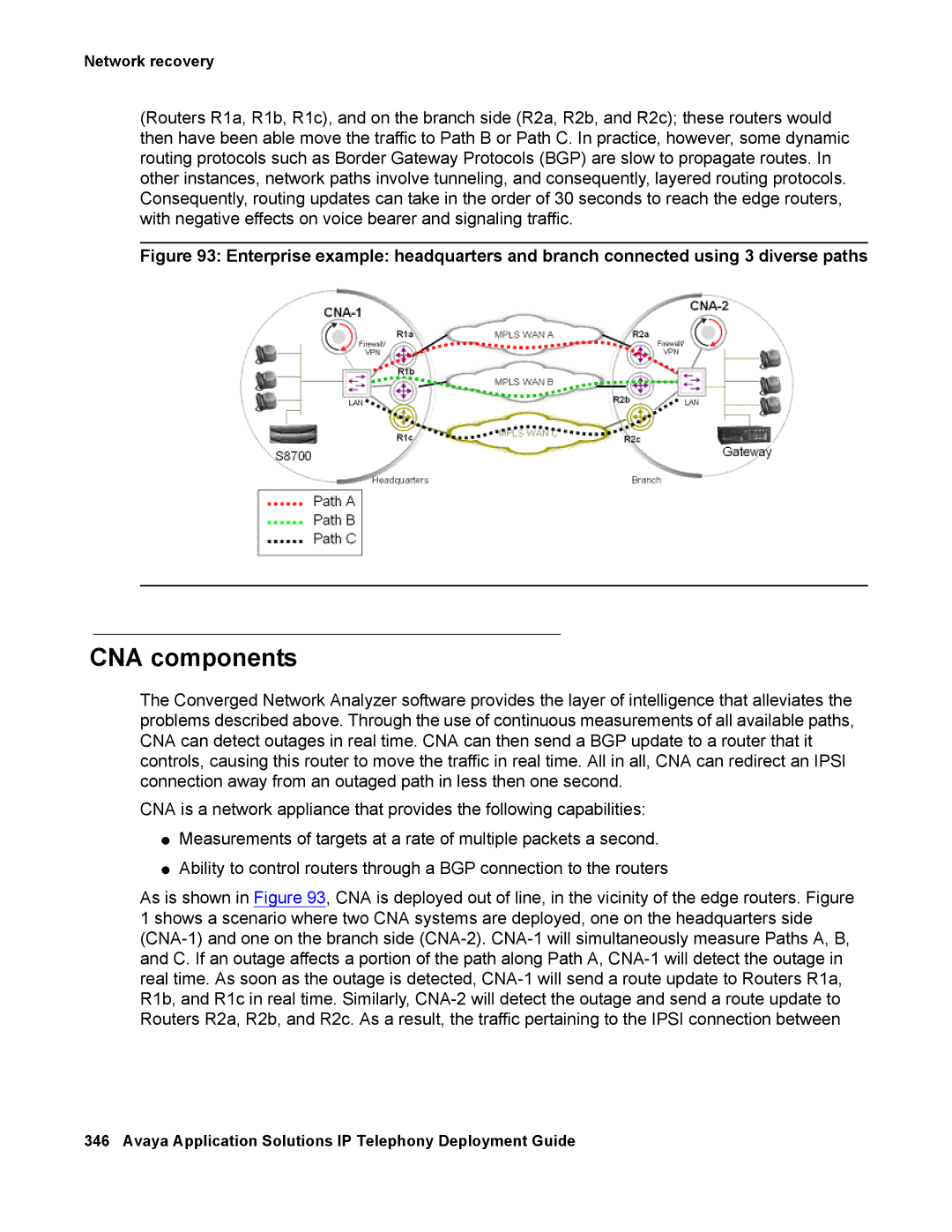
Network recovery
(Routers R1a, R1b, R1c), and on the branch side (R2a, R2b, and R2c); these routers would then have been able move the traffic to Path B or Path C. In practice, however, some dynamic routing protocols such as Border Gateway Protocols (BGP) are slow to propagate routes. In other instances, network paths involve tunneling, and consequently, layered routing protocols. Consequently, routing updates can take in the order of 30 seconds to reach the edge routers, with negative effects on voice bearer and signaling traffic.
Figure 93: Enterprise example: headquarters and branch connected using 3 diverse paths
CNA components
The Converged Network Analyzer software provides the layer of intelligence that alleviates the problems described above. Through the use of continuous measurements of all available paths, CNA can detect outages in real time. CNA can then send a BGP update to a router that it controls, causing this router to move the traffic in real time. All in all, CNA can redirect an IPSI connection away from an outaged path in less then one second.
CNA is a network appliance that provides the following capabilities:
●Measurements of targets at a rate of multiple packets a second.
●Ability to control routers through a BGP connection to the routers
As is shown in Figure 93, CNA is deployed out of line, in the vicinity of the edge routers. Figure 1 shows a scenario where two CNA systems are deployed, one on the headquarters side
